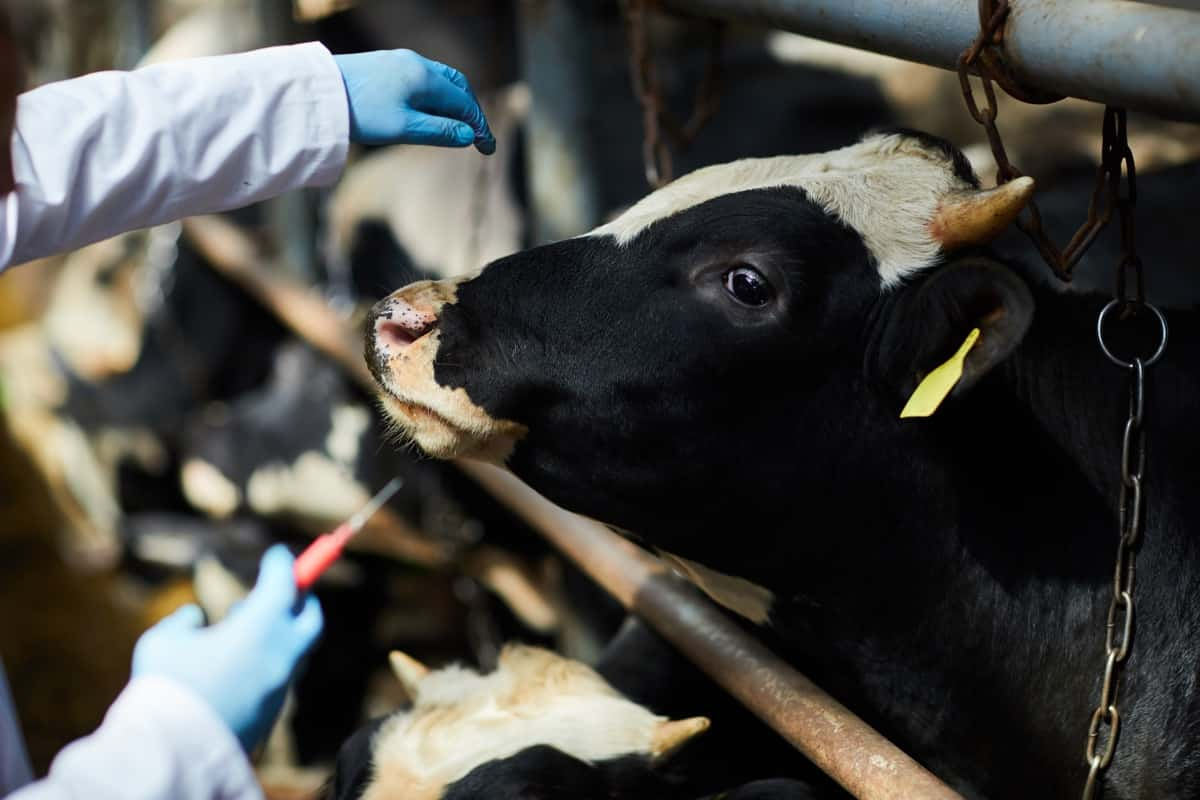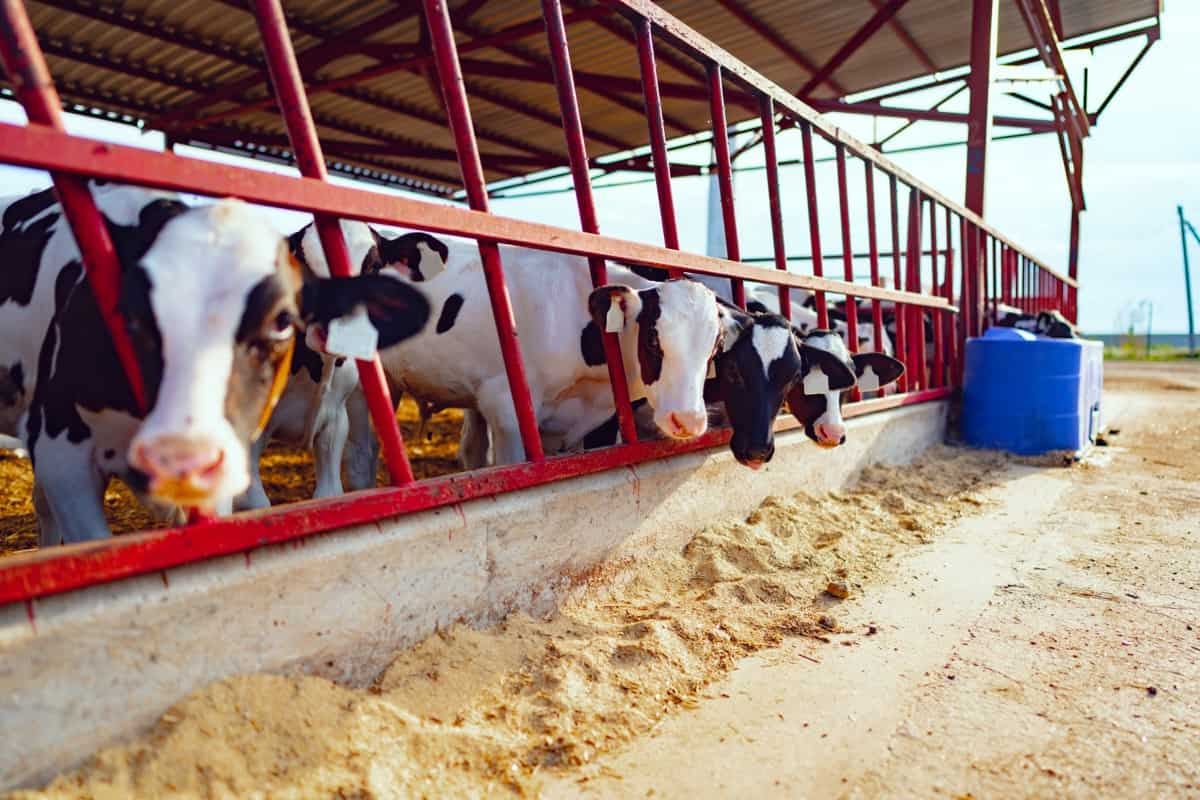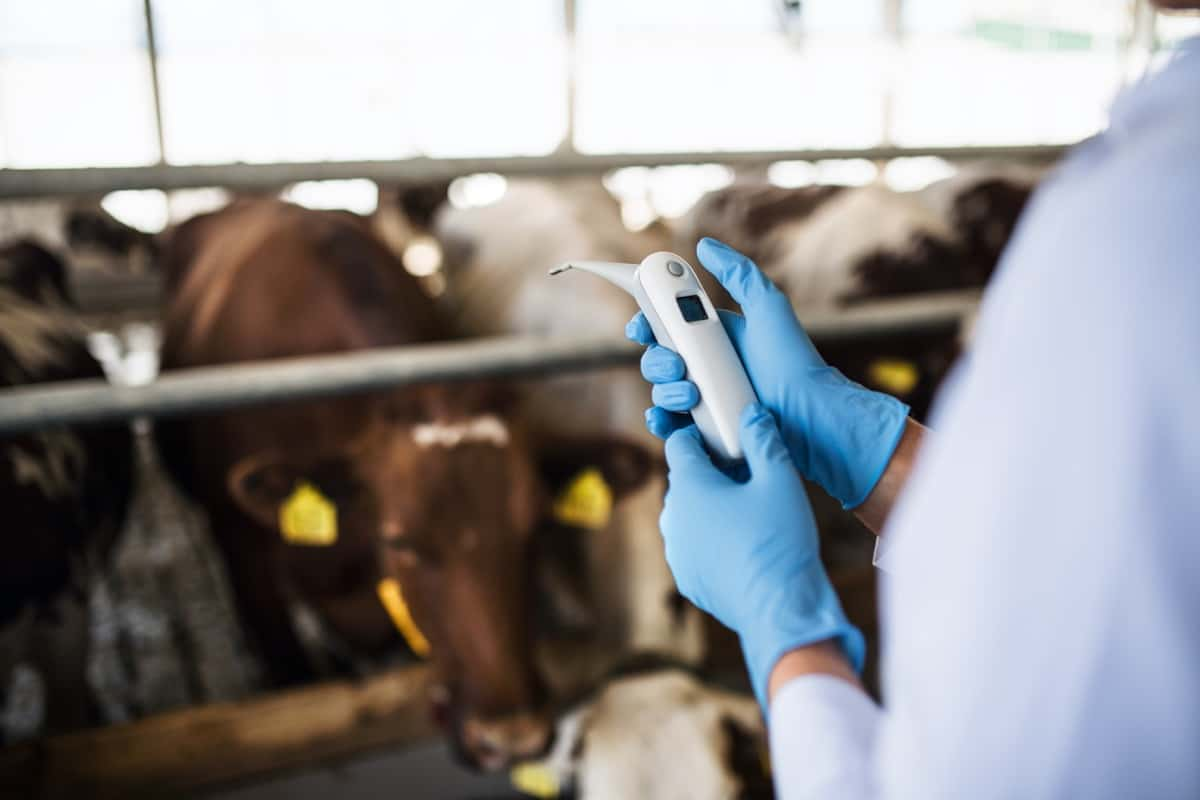Hemorrhagic septicemia (HS) is a serious bacterial infection affecting water buffalo, cattle, and bison in tropical Asia, primarily in India and Southeast Asia. It is a very deadly disease regarded as the most economically significant bacterial disease of water buffalo and cattle in these areas. The disease is devastating for smallholder farmers with poor husbandry practices and free-range management. It is listed as an animal disease by the World Organization for Animal Health (OIE).

Hemorrhagic Septicemia Disease Management in Cattle
Causes of Hemorrhagic Septicemia Disease in Cattle
Hemorrhagic septicemia (HS) in cattle is caused by the bacterium Pasteurella multocida, specifically serotypes B:2 and E:2. These serotypes have been identified as the primary cause of classical HS in most areas where the disease is endemic, with serotype E:2 found only in Africa.
Other P. multocida serotypes can also cause septicemic pasteurellosis, which is clinically identical to HS. However, this has been documented more frequently in wild ruminants and in geographical locations not impacted by HS, such as the United States, Europe, the United Kingdom, Australia, and Canada.
Disease cycle of Hemorrhagic Septicemia Disease
Cattle hemorrhagic septicemia (HS) can infect 5% of healthy water buffalo and cattle infected by a modest number of germs. The disease is most frequent during the rainy season, where high temperatures, humidity, and other stresses (such as concurrent diseases) can cause epidemics. Contact with infected fluids or contaminated feed/water causes infection. It starts in the tonsil and spreads fast, causing bacteremia, tissue damage, and cytokine response.
Clinical symptoms may arise within 1-3 days, and death may occur between 8 and 24 hours later. In endemic locations, the illness affects older calves and young adults with varied morbidity and death. However, it can cause severe morbidity and mortality in nonendemic places.
What are the Symptoms of Hemorrhagic Septicemia Disease?
- Hemorrhagic septicemia can present as a peracute or acute disease with fever, hypersalivation, nasal discharge, labored respiration, apathy or restlessness, reluctance to move, lacrimation, and subcutaneous swelling in the pharyngeal region.
- The swelling can extend to the ventral neck and brisket and may cause progressive respiratory distress, cyanosis, terminal recumbency, and sometimes abdominal pain with diarrhea.
- Characteristic lesions include swelling of the subcutis and muscle with clear blood-tinged edema fluid, widespread congestion with petechiae and ecchymoses, and major hemorrhages in the pharyngeal and cervical lymph nodes.
- Pulmonary congestion, edema, interstitial pneumonia, and gastroenteritis may also be present.
In case you missed it: Anthrax Disease Management in Cattle: Symptoms, Treatment, Prevention and Management of Disease

Diagnosis of Hemorrhagic Septicemia Disease
Diagnosis of Hemorrhagic Septicemia (HS) is based on history, clinical signs and lesions, and laboratory tests. Clinical diagnosis in endemic areas is made by considering history, lapses in vaccination, environmental conditions, and the typical signs and lesions of the disease.
A definitive diagnosis is made by isolating P. multocida serotype B:2 or E:2 from the blood and tissues of a patient with typical clinical signs. Other serotypes can cause HS-like disease, so differentiation is necessary. The mouse protection test, hemagglutination, agglutination, counter immunoelectrophoresis, and molecular techniques (PCR array) are used to identify and differentiate the serotypes. The PCR array technique is most feasible in endemic areas. It can be used with various samples from cultures, including blood, tissues, or bacteria.
Treatment and Control of Hemorrhagic Septicemia Disease
The most effective treatment for hemorrhagic septicemia (HS) is given early in the disease. Sulfonamides, tetracyclines, penicillin, gentamicin, kanamycin, ceftiofur, enrofloxacin, tilmicosin, and chloramphenicol are antimicrobials used to treat HS, although certain strains of the bacteria (P multocida) are developing resistance to these medications.
Preventive and Management Measures to Control Hemorrhagic Septicemia Disease
- Killed vaccines such as bacterins, alum-precipitated, aluminum hydroxide gel vaccines, and oil-adjuvant vaccinations are routinely used for prophylaxis.
- For cattle over three, two doses 1-3 months apart are suggested, followed by annual booster vaccines.
- The oil-adjuvant vaccination is the most effective, but owing to its viscosity, it might not be easy to administer.
- The alum-precipitated and aluminum hydroxide gel vaccinations provide shorter protection (4-5 months) and require boosters twice a year.
- Although live and modified-live vaccines have had some success, they are not commonly available.
- The OIE advises establishing disease-free zones and concentrating immunization efforts in places where the disease is frequent.
- Intranasal live-attenuated vaccines have also been proposed to boost vaccine coverage by allowing animals in touch with vaccinated animals to self-vaccinate.
Vaccination Schedule for Hemorrhagic Septicemia Disease in Cattle
Control of Pasteurella multocida can be achieved through antimicrobials such as penicillin-G, streptomycin, chloramphenicol, chlortetracycline, sulpha, trimethoprim, enrofloxacin, and oxytetracycline. Prevention is mainly through vaccination.
Various killed and live vaccines are available, including bacterins, alum-precipitated, aluminum hydroxide gel, and oil-adjuvant vaccines. Vaccines should be made from the strains of P multocida prevalent in the region of use. Regular booster vaccinations are recommended to maintain immunity.
In case you missed it: Tobacco Streak Virus Management in Cotton: Disease Symptoms, Treatment, Chemical, Biological, Natural, and Organic Control

Impact of Hemorrhagic Septicemia Disease
Large numbers of cattle and water buffalo can perish during an epidemic, which has serious economic consequences for India’s livestock sector because of the resulting drop in productivity and profitability for farmers.
Conclusion
Hemorrhagic Septicemia (HS) is a serious and infectious bacterial disease that affects cattle. The symptoms are high temperature, tiredness, decreased appetite, and bleeding. Antimicrobials and vaccinations are the primary treatment and preventative approaches. The oil-adjuvant vaccination is the most effective, although it can be difficult to administer. Early detection, rapid treatment, and substantial immunization coverage are critical to the success of HS control. Proper management and biosecurity measures can aid in the prevention of disease outbreaks.
- Types of Fungicides Used in Agriculture
- Common Issues in the Fruit Development Stage of Pomegranate Farming
- Fruit Development Issues in Papaya: Easy Solutions and Treatment
- Soil-Borne Diseases and How to Protect Your Plants
- Practices to Prevent Disease Spread in the Garden
- From Wilted to Thriving: How to Treat Root Rot Naturally in Houseplants
- Natural Remedies to Cure Brown Spots on Fig Tree Leaves
- Natural Solutions for Poinsettia Problems: 100% Effective Remedies
- How to Control Calla Lily Problems: Natural Remedies for Leaf and Flower Problems